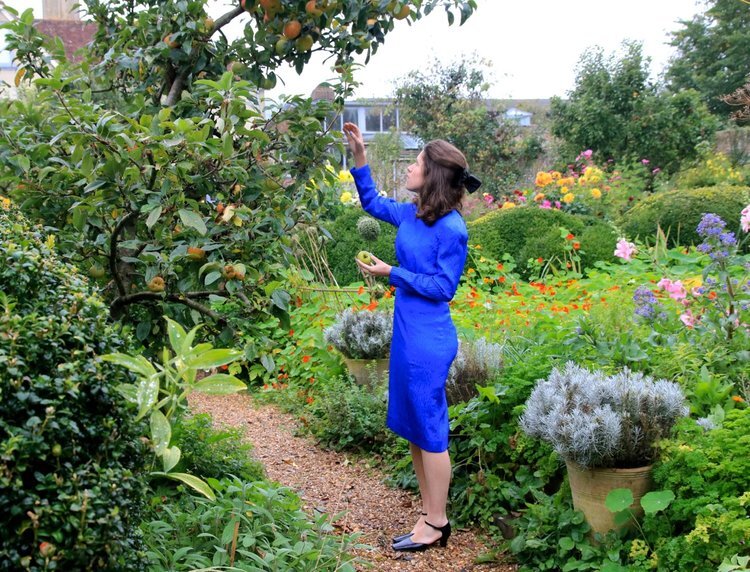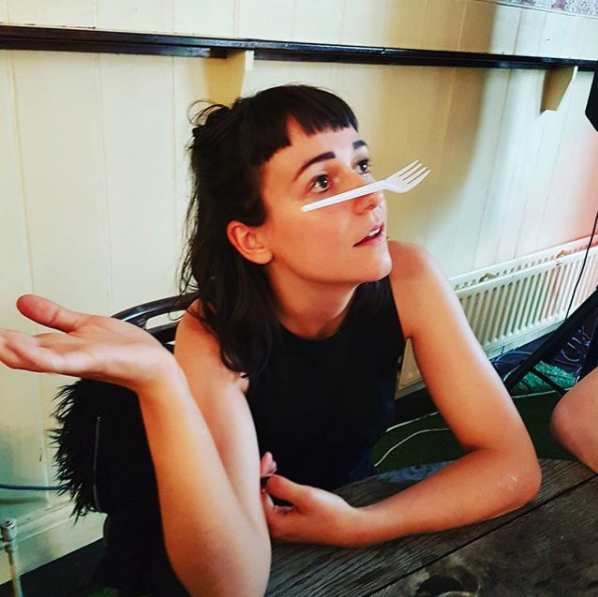In our first ‘Brits Abroad’ post, Basil Wedgwick, contemporary Grand Tourist with a penchant for a good Campari and a splendid Italian palazzo (preferably both at the same time), shares his musings on a recent jaunt to Genoa.‘Genoa - More Than This’ is the current tagline used by the Genoese tourist board. I mean more than what? On asking several of my friends what they thought of when asked about Genoa the most they could come up with was ‘It’s in Italy’. ‘How about Christopher Columbus, Focaccia Italy’s largest port and being one of the great historical maritime powers in Europe?’ ‘I thought Focaccia and Columbus were from Spain or Portugal’ was the response that summed up the collective shrug of indifference, though that follows most things I say when I talk about travelling.I have therefore come up with a new tagline for the Genoese tourist board ‘Genoa - Pesto, Prozzies[1] and Palazzos’.Quite the trifecta, I know. But before you book your one way flights with nothing but a ‘Beginner’s Guide to Van Dyck’ and a fifty pack of johnnies I want to go some way in to explaining why it actually is even more than this trio of delights.It’s very rare to go somewhere that is genuinely bizarre. Everywhere is unusual in its way.[2] But I can count on one hand the amount of places I’ve been to and thought ‘yeah, this reality doesn’t quite match up with my frame of reference’. It could be something like it being built on stilts in a swamp (Venice) or ethnically segregated (Sittwe in Myanmar) or just a je ne sais qua perhaps born from the weight of history (Berlin). Of course this is completely subjective but those are the three places my mind goes to (As a fun game, try it! There are no wrong answers, other than Birmingham) Genoa is most definitely on that list of bizarre places.To start with the geography of it. On one side you have the Mediterranean, on the other side you have the mountains. This mountainous landscape looms inescapably behind the city and is more than imposing, it’s wild. Wild in a way that you don’t seem to get in cultivated and populous Europe. I’m not talking about anything dramatic like bears and tigers. It just seems like humans couldn’t and shouldn’t be stupid enough to try and perch themselves on it. Looking at it you can’t imagine what grows easily there. A few things do though, and grow very well, and they are Basil, Garlic, Olives and Pine nuts.These four ingredients are of course the key components of Pesto[3] and the first of the trio of Genoese delights. Pesto is one of those things that is almost unanimously loved (apart from if you’re allergic to nuts, or a vampire). Having it in Genoa though is special, it feels like the landscape of Liguria condensed and made edible. My travelling companion and I couldn’t work out at first whether the Genoese had got lucky that their main ingredients were this good or that they were genius for combining them in such a versatile and delicious way.We realised they were genius when it became apparent that all of their food combined this extraordinary flavour with simplicity for results that are so evocative of the place itself. Take Focaccia, in Genoa it tastes like the Mediterranean, salty and a little sour with some aromatic dried herbs across it, the crispy flat variety reminding me slightly of crispy seaweed you get in Asian restaurants. Their chickpea flour chips (kind of like a better Polenta chip) are the moreish snack you can imagine sailors picking at ten at a time whilst they down carafes of wine when they are on shore leave. Rabbit (a rare mammal that can survive on the hills) with olives tastes fresh and simple like a terraced farmer’s treat, the list can go on.Another mammal that has managed to eke out existence are humans, and against the odds they have managed to build a city of 600,000 people against this wall of wild hills. The necessity of the small area they have to work with has bred the unique cityscape of its old town. It is, apparently, the largest medieval city centre left in Europe[4], whether it is or not, it’s a bloody maze. It is also nearly unchanged. I don’t mean that in the romantic candlelit strolls and quaint restaurants way, I mean that in a ‘Oh shit I’m going to get knifed’ Game of Thrones way.[5] In an effort to complete this magical time travel effect they have decided even to replicate the smell of a medieval city by having their bins all grouped together in open air shop fronts, lit in a blue light that puts the ‘scent’ in ‘aggressive fluorescent light’. There are no boulevards, few pretty avenues, it is an utter warren of criss-crossing, narrow and almost unnaturally confusing streets.It also is full of the second of the trio of delights, that is sex workers. It’s a hard subject to broach really without sounding like a voyeuristic gawper, so I will dispense with any pretence that I will be addressing the serious socio-economic or moral concerns and frivolously discuss in the immediate context of the culture of Genoa.My mother at times refers to sex workers in the euphemistic (and slightly vampiric) ‘Ladies of the night’ but it would be a very inaccurate term, ‘Ladies of the day’ would be much more accurate.[6]. When first wandering the streets at 3pm on a Sunday my travelling companion and I found it disconcerting and thought we’d ended up in to the wrong part of town (our colossal hangovers didn’t help). I mean in gentrified London it is something that you no longer really see. When we realised it was every part of town we stopped being as worried, but were confused. We also took our lead from the local Genoese, who seemed utterly unconcerned and unjudgmental . From the locals there wasn’t a second glance, a tightening of a handbag to the chest, a hand put protectively in a pocket over a wallet. Indeed in one case I saw a young family with a pram have their photo taken by one of the ladies of the day.This commendable ‘let people get on with what they want to get on with’ seemed to stretch to every aspect of Genoese life. In one of the most bizarre moments of my life I was sat at a bar at the end of the jetty that was hosting a tango night for young professionals, 50 yards behind us a big band concert was going on, 50 yards behind that about a hundred African migrants were playing drums and dancing. With no warning a 10 minute firework display went off out at sea, all three groups didn’t look up from the entertainment they were engaged in, and though all three were audible to each other nobody seemed to care. I have since read and was unsurprised that it was one of the only places that the police and locals tolerate the enterprise of migrants (for example selling handbags on the street). Without engaging in shakedowns and arbitrary cruelty. It also has one of the lowest crime rates of any major city in Italy.This oddity may make it sound unappealing, but it isn’t. The atmosphere and peculiar streets, or Vicolo, brings out a sense of genuine discovery and vibrancy to the city. The Vicolo, too narrow for cars, are intimate and quiet, and you never know when they will open out in to a small buzzing piazza, which almost unanimously have chairs and tables laid out for a busy local bar.The Tardis like churches and Palazzi are seemingly plonked at random through the city, jostling for space with medieval high rise buildings. Most had the majority of their façade covered by other buildings, maybe a lady of the day or two leaning against it. There is a famous street that has at least 6 Palazzi on it called Via Garibaldi, if you were to look it up on google though one wouldn’t see what the fuss was about, so uncaring of photogenic boulevards or the needs of voracious Instagrammers.This may contribute to the lack of tourists, which for a large Italian city in the middle of July is amazing. In a personal pilgrimage to the church of the Doria family and the burial site of Andrea Doria (hero of Lepanto, scourge of Tunisia and Eponym of SampDoria F.C) we were the only people inside. The custodian of the church showed us the art and decided (after a garbled question by me about football) that he would unlock Andrea Doria’s crypt for us and show us his tomb, designed by Montosorli.The interiors of the Palazzi themselves are as finely decorated and maintained as any in Italy. Unable to boast any famous ‘home-grown’ artists like Venice or Florence it became a meeting ground of artists from around Europe.[7] I lost count of the Van Dyck’s and Reubens, and saw one of the most peculiar and impressive Brueghels I’ve seen.Even if one were to take the paintings off the walls of the Palazzei they would be worth visiting. The murals and frescoes were so extraordinary. In one room in a Palazzo I visited I was so dumbstruck by the majesty I managed to achieve peak middle class and dropped my Campari Spritz on the floor, narrowly avoiding a beautiful Turkish carpet.I’ve barely scratched the surface of all the amazing and bizarre things I saw- like one of Europe’s largest cemeteries, which also contains the best and largest collection of 19th century sculpture in the world. Or the seafront prison where Marco Polo composed his memoir, which in a normal city would be the focal point, in Genoa it’s façade obscured (like the rest of the sea front) by a raised motorway, a museum to Genoa F.C tucked behind it, day trips to beautiful Ligurian beach towns, where you can have takeaway pesto whilst watching the sea attack 800 year old forts.If all of this doesn’t drag you in though I can only say one thing, there was ‘more than this’.[1] I apologise for using this insensitive terms - sex workers, sea views and cemeteries didn’t quite have the same ring to it. For a serious discussion on the term this is a good, sensitive article that I slightly disagree with: http://www.newstatesman.com/politics/2014/12/why-we-shouldnt-rebrand-prostitution-sex-work[2] Bucharest for example falls squarely in to that category, it is a city of unfinished buildings built in to the side of other unfinished buildings.[3] Missing, of course, is Parmesan which is from the inland region of Emilia-Romagna.[4] I struggle to believe this though, for a start Venice is bigger and is nearly unchanged from 1700. Prague I suspect too is considerably larger, as is Krakow, Naples, Valencia and Seville. It is likely though it has the largest pedestrian pavement area, but that isn’t as catchy.[5] People have asked me when I said this whether it was like the Assassin’s Creed games, to which I had to say no, because being an assassin there would be boringly easy).[6] There are a couple of large tourist destinations where prostitution is so common it has become part of the ‘attraction’ (Bangkok and Amsterdam) but in Bangkok it is very much a ‘when the sun goes down’ situation, and Amsterdam there is a clearly delineated area. [7] That is not to say it didn’t produce any artists, their was some objectively decent renaissance art produced by the Genoese school, subjectively though it wasn’t to my taste as it seemed slightly too posed.

